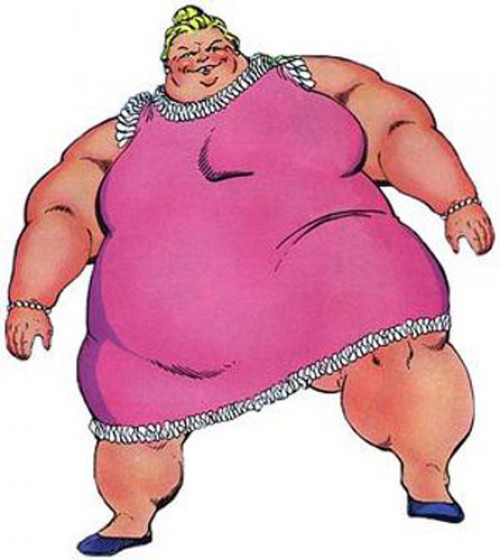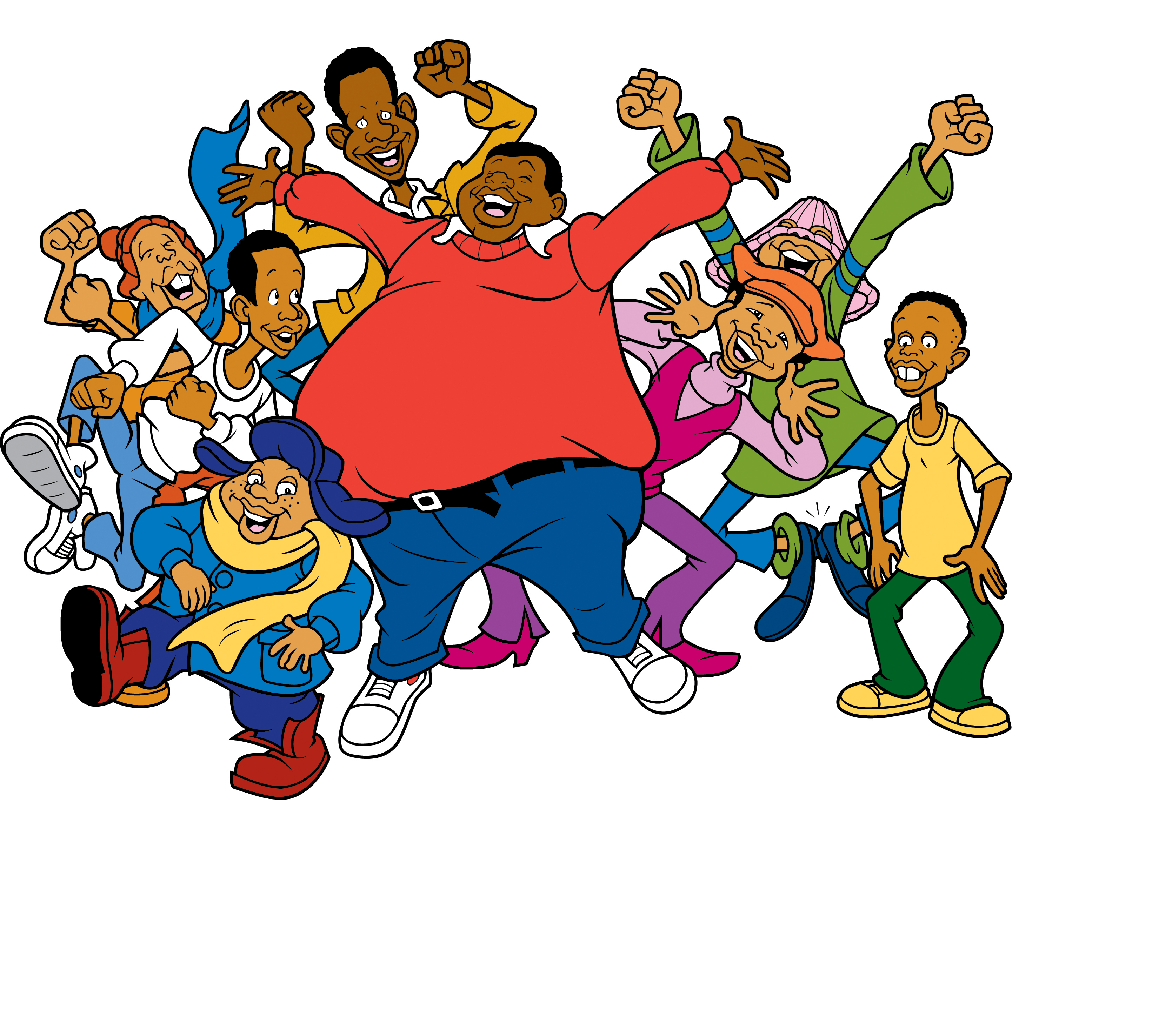When it comes to animated characters, fat animation characters have always held a special place in our hearts. They’re not just big; they’re bold, vibrant, and full of personality. These characters bring humor, depth, and relatability to the screen in ways that thinner characters often don’t. But why do we love them so much? And what makes these characters stand out?
Think about it for a second. From Homer Simpson to Patrick Star, fat animation characters have become cultural icons. They’re the ones who make us laugh, cry, and sometimes even feel seen. These characters aren’t just sidekicks or comedic relief—they’re often the heart and soul of their respective shows.
But here’s the thing: fat animation characters are more than just their size. They’re complex, multidimensional beings who challenge stereotypes and break down barriers. So, let’s dive into the fascinating world of fat animation characters and explore why they matter so much to us.
Read also:Summer Glau Measurements The Ultimate Guide To Her Stats Bio And More
Daftar Isi
- The History of Fat Animation Characters
- Biography of Iconic Fat Animation Characters
- Why Are Fat Animation Characters So Popular?
- Breaking Stereotypes: Fat Animation Characters in Modern Media
- The Cultural Impact of Fat Animation Characters
- Benefits of Having Fat Animation Characters in Media
- The Art of Designing Fat Animation Characters
- Psychology Behind Loving Fat Animation Characters
- The Future of Fat Animation Characters
- Conclusion: Celebrating Fat Animation Characters
The History of Fat Animation Characters
Fat animation characters have been around for as long as animation itself. Back in the early days of cartoons, big-bodied characters were often used as comedic devices. Think of characters like Betty Boop’s grumpy landlord or even Goofy, who was originally designed as a clumsy, oversized dog. These characters were fun, quirky, and added a layer of humor to otherwise straightforward plots.
But over time, fat animation characters evolved beyond just being punchlines. In the 1980s and 1990s, we started seeing more nuanced portrayals of larger characters. Shows like "The Simpsons" and "SpongeBob SquarePants" introduced us to characters who were relatable, flawed, and multidimensional. These characters weren’t just there to make us laugh—they were there to teach us lessons about life, friendship, and acceptance.
From Punchlines to Main Characters
One of the most significant shifts in the portrayal of fat animation characters came with the rise of sitcom-style animated shows. Characters like Homer Simpson and Garfield became household names, proving that fat characters could be just as compelling as their thinner counterparts. This shift wasn’t just about representation—it was about giving audiences characters they could root for, regardless of their size.
And let’s not forget the impact of female fat animation characters. Characters like Agnes Skinner and Marge Simpson showed us that women could be strong, intelligent, and funny without conforming to traditional beauty standards. These characters paved the way for a new era of representation in animation.
Biography of Iconic Fat Animation Characters
Let’s take a closer look at some of the most iconic fat animation characters and what makes them so special. From Homer Simpson to Patrick Star, these characters have left an indelible mark on pop culture.
| Name | Show | Personality | Notable Traits |
|---|---|---|---|
| Homer Simpson | The Simpsons | Clumsy, loving, and hilarious | Love for donuts, working at the nuclear plant |
| Patrick Star | SpongeBob SquarePants | Childlike, loyal, and optimistic | Best friend to SpongeBob, lives under a rock |
| Garfield | Garfield and Friends | Lazy, sarcastic, and food-loving | Hates Mondays, loves lasagna |
Why These Characters Matter
Each of these characters brings something unique to the table. Homer Simpson is the everyman we all relate to, while Patrick Star represents the innocence and joy of childhood. Garfield, on the other hand, is the ultimate slacker who reminds us that it’s okay to take life a little slower sometimes.
Read also:Nice Things To Say To Your Crush Thatrsquoll Make Them Melt
Why Are Fat Animation Characters So Popular?
There’s something about fat animation characters that just clicks with audiences. Maybe it’s their larger-than-life personalities or their ability to make us laugh in even the darkest of times. Whatever the reason, these characters have a way of sticking with us long after the credits roll.
Here are a few reasons why fat animation characters are so beloved:
- Relatability: Many people see themselves in these characters, whether it’s in their struggles, their quirks, or their love for food.
- Humor: Fat animation characters often bring a unique brand of humor to the screen, whether it’s through slapstick comedy or clever wordplay.
- Representation: In a world where thinness is often celebrated, fat animation characters offer a much-needed counterpoint. They show us that beauty comes in all shapes and sizes.
The Power of Representation
Representation matters, and fat animation characters prove that time and time again. When we see characters who look like us or share our experiences, it validates our existence. It tells us that we’re not alone and that our stories are worth telling.
Breaking Stereotypes: Fat Animation Characters in Modern Media
In the past, fat animation characters were often relegated to the role of the comedic sidekick or the lazy best friend. But modern media is breaking down those stereotypes and giving us characters who are so much more than one-dimensional caricatures.
Shows like "BoJack Horseman" and "Bob’s Burgers" have introduced us to fat characters who are complex, intelligent, and fully realized. These characters challenge our assumptions about what it means to be fat and show us that size doesn’t define a person’s worth.
Modern Examples
Take Tina Belcher from "Bob’s Burgers," for example. She’s not just a fat character—she’s a teenage girl navigating the ups and downs of adolescence. Her size is just one part of who she is, and it’s treated with the same importance as any other aspect of her personality.
The Cultural Impact of Fat Animation Characters
Fat animation characters have had a profound impact on popular culture. They’ve changed the way we think about size, representation, and diversity in media. But their influence goes beyond just entertainment—they’ve also sparked important conversations about body positivity and self-acceptance.
Studies have shown that seeing diverse representations of bodies in media can improve self-esteem and reduce body dissatisfaction. This is especially true for children, who are still forming their ideas about beauty and worth. Fat animation characters provide a much-needed counterpoint to the thin ideal that dominates so much of our media landscape.
Changing the Narrative
By showcasing fat characters in positive, multidimensional ways, animation is helping to change the narrative around body size. It’s showing us that fat people can be heroes, villains, friends, and lovers—just like anyone else. And that’s a message we can all get behind.
Benefits of Having Fat Animation Characters in Media
There are countless benefits to including fat animation characters in media. For starters, it promotes diversity and inclusion. It also helps to normalize fat bodies and reduce stigma around size. But perhaps most importantly, it gives fat people a voice and a place in the stories we tell.
Here are just a few of the benefits:
- Improved Representation: Fat characters help to diversify the media landscape and ensure that all bodies are represented.
- Body Positivity: Seeing fat characters in positive roles can help to promote body positivity and self-acceptance.
- Increased Empathy: When we see fat characters as fully realized human beings, it helps to build empathy and understanding for people of all sizes.
Why Representation Matters
Representation isn’t just about ticking boxes—it’s about creating a world where everyone feels seen and heard. Fat animation characters are a small but important part of that mission. They remind us that diversity isn’t just a buzzword—it’s a necessity.
The Art of Designing Fat Animation Characters
Designing fat animation characters is an art form in itself. It requires a delicate balance between exaggeration and realism. Too much exaggeration and the character risks becoming a caricature; too little and they lose their distinctive charm.
Animation studios often use a variety of techniques to bring fat characters to life. From exaggerated proportions to playful expressions, these characters are designed to be both visually striking and emotionally resonant.
Tips for Designing Fat Animation Characters
Here are a few tips for animators looking to create compelling fat characters:
- Focus on Personality: A character’s size should enhance their personality, not define it.
- Use Movement to Your Advantage: Fat characters often move differently than thinner characters, and that can add a layer of authenticity to their design.
- Pay Attention to Details: Small details like clothing, accessories, and posture can go a long way in bringing a character to life.
Psychology Behind Loving Fat Animation Characters
There’s a lot of psychology behind why we love fat animation characters so much. For one, they often embody traits that we find comforting and familiar. Their larger-than-life personalities and relatable struggles make them feel like old friends.
But there’s also something deeper at play. Fat characters often challenge our assumptions about what it means to be attractive, successful, or worthy. They remind us that beauty comes in all shapes and sizes and that it’s okay to be different.
The Science of Connection
Studies have shown that people are more likely to connect with characters who share their experiences or traits. This is especially true for fat people, who often feel underrepresented in media. When we see characters who look like us or share our struggles, it creates a powerful sense of connection and validation.
The Future of Fat Animation Characters
As animation continues to evolve, we can expect to see even more diverse and nuanced portrayals of fat characters. With the rise of streaming platforms and independent animation studios, there’s more room than ever for new voices and perspectives to shine.
But the future isn’t just about representation—it’s about empowerment. We need more fat characters who are leaders, heroes, and role models. Characters who show us that size doesn’t define our potential or our worth.
What to Expect
In the years to come, we can expect to see fat animation characters in even more prominent roles. From leading ladies to action heroes, these characters will continue to break down barriers and challenge stereotypes. And that’s a future we can all get excited about.
Conclusion: Celebrating Fat Animation Characters
Fat animation characters have come a long way from their early days as punchlines. Today, they’re celebrated for their complexity, humor, and relatability. They remind us that beauty comes in all shapes and sizes and that it’s okay to be different.
So, the next time you watch your favorite cartoon, take a moment to appreciate the fat characters who bring joy, laughter, and meaning to your life. And don’t forget to share this article with your friends and family—they deserve to know just how special these characters are!
And hey, if you loved this article, why not leave a comment or share it on social media? Let’s keep the conversation going and celebrate the amazing world of fat animation characters together!


